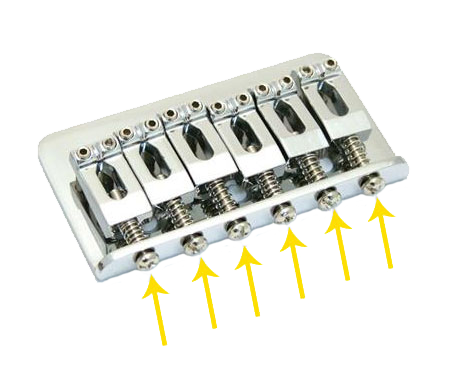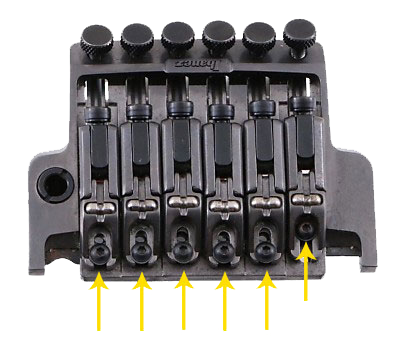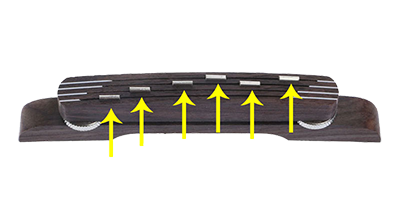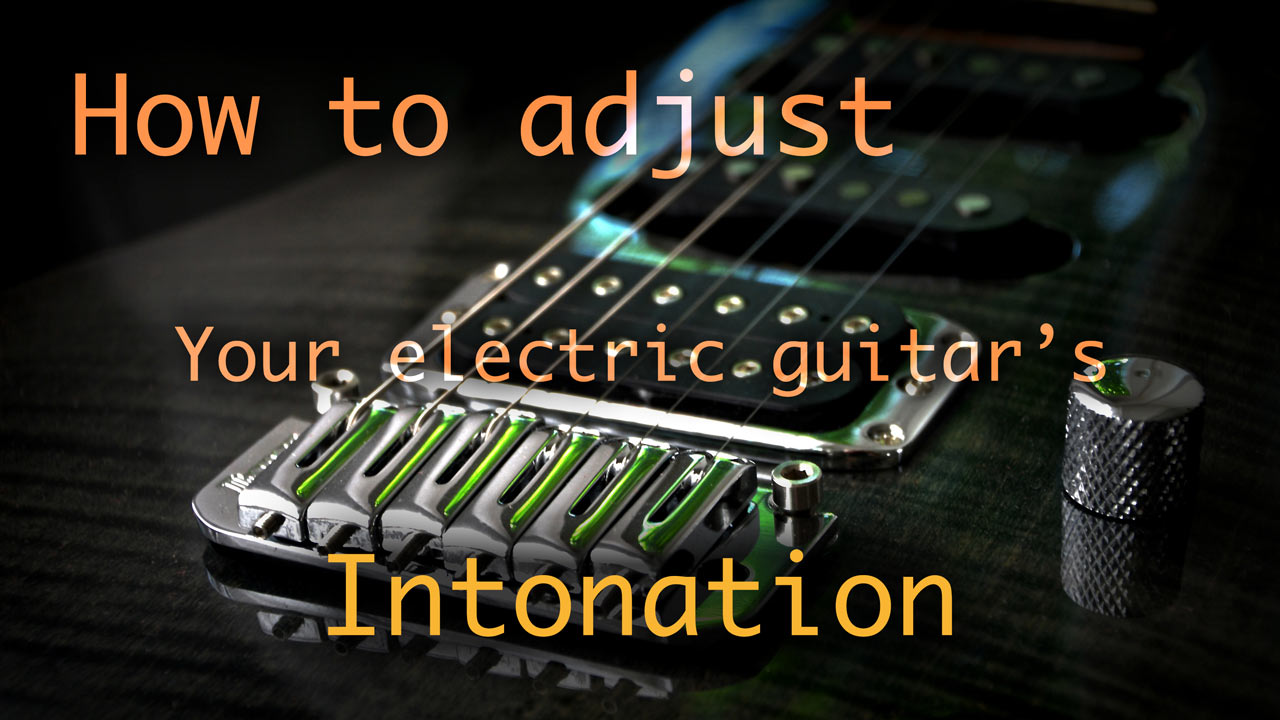How To Adjust Your Electric Guitar’s Intonation
You have heard people talking about intonation and may think the intonation on your guitar needs to be adjusted. But how do you do it? I’m here to show you that it can be done at home in just a few minutes with basic tools. So read on and lets get your guitar’s intonation spot on!
What is the guitar’s Intonation?
The intonation refers to how the length of the string relates to the position of the frets. This can be adjusted at the bridge of your guitar. If this is not correctly adjusted the guitar’s frets will not play in tune.
Why is this? As an example let’s take fret 12 which is meant to be exactly half way along the string.

The distance between the top nut and fret 12 cannot be changed. However, the where the string meets the bridge can be adjusted forwards and backwards on most electric guitars. By moving the point where the string meets the bridge the middle point of the string also changes. If fret 12 is not exactly in the middle all the fretted notes will be out of tune.
How to test your guitar’s intonation
How to test your guitar’s intonation
In order to test the intonation of your guitar you want to play a harmonic at fret 12 followed by the same fretted note at fret 12. The harmonic at fret 12 will always be in tune as it does not use the frets to create its pitch. By comparing this harmonic to the fretted note you can see if there is any variance. Remember the harmonic at fret 12 is always correct so if the two notes are different it is the fretted note that is out and the bridge needs to be adjusted. Also the intonation needs to be tested and adjusted for each string separately.
How to adjust the intonation
So now you have diagnosed an issue in your guitar’s intonation. How do you correct it? Though there are a few different systems this is usually achieved by tightening or loosening a screw at the bridge. Doing this slides the part of the bridge for that string backwards or forwards changing the length and therefore also the intonation of that particular string. Here we have a few different types of bridge that you may come across:

Here we have the Fender style bridge with a line of six sprung philips screws. By tightening the screw it lengthens the string by pulling back its slider. Conversely by loosening the screw it shortens the string pushing the slider forward.
This one is an Ibanez Edge Pro Tremolo bridge. In this case you can see an allen key bolt for each string. These can be more awkward to adjust but work with a slider in the same way.


In the case of a bridge from an Archtop Jazz guitar you have no screws or bolts. The small metal wires can be slotted into four different channels to adjust the point at which the string contacts the bridge.
So as you can see there are a number of different systems on different bridges. However, the root idea is the same and each is easy to figure out if you understand the general concept.
Do you move the bridge end forwards or backwards?
As you of course know the higher up the string you play and shorter you make the string the higher the pitch. It is the same with adjusting your guitar’s intonation.
Lengthen:
If the fretted note is a higher pitch you can lower it to the same as the harmonic by lengthening the string.
Shorten:
On the other hand if the fretted note is lower than the harmonic by shortening the string the fretted note’s pitch will rise.
Before you adjust the intonation remember to loosen the string. In many cases without initially do this you can easily damage the bridge or threads on the bolts in some way.
So now you are armed with the knowledge you need to get your guitar’s intonation spot on! A properly intonated guitar will play in tune all the way up the neck. This is essential for a good sound and especially when using distortion! If the pitch is slightly out this difference is pronounced by the distortion making many songs unplayable. As usual ask any questions you have in the comments below.
Did you find this page useful? If so be amazing and share it with your friends! And don’t forget to Follow me on Facebook, Stay up-to-date on my Twitter and See the latest pictures and videos on Instagram. I’ll see you in the next article!



Leave A Comment